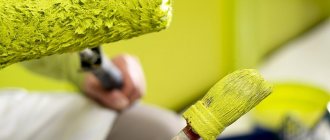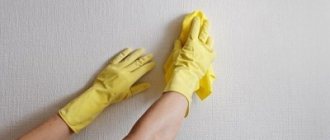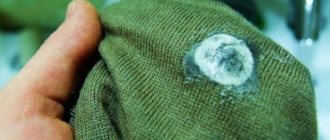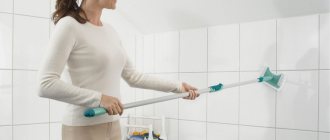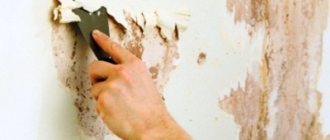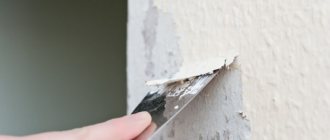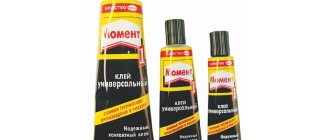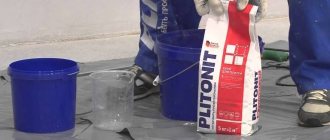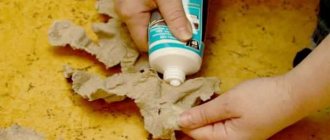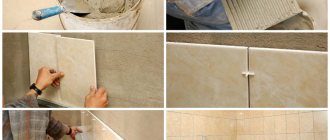Share on social media networks:
Dishes are the main decoration of any dish and it will not be good if there are traces of price tags, sticky marks from them, glue, labels, etc. on it. Moreover, dust, dirt, lint and other unnecessary impurities accumulate on the marks left by the label. Agree, you have encountered such a situation more than once, and sometimes you didn’t get around to completely removing and removing this disgrace, or you simply had no idea how this could be done. You will learn from this article how to wash or remove glue from labels from dishes, so that such a problem will cease to exist for you in principle.
Plastic
In everyday life today you can see many different bowls, cups, and vases made of bright and convenient plastic. The originality of an item can be ruined by useless stickers that can be easily peeled off. Let's deal with them in two ways:
- Try applying ice for a while, then remove it with something sharp, but do not damage the dishes.
- There is the exact opposite method - heating with a hairdryer. True, it is better to do it before washing the sticker - this way the effect will be maximum.
- The sticky layer from stickers and tape from plastic can be easily removed with alcohol.
- If suddenly there is no alcohol in your house, then try to remove the sticky stain with any alcohol-containing solution - cologne, vodka, lotion, or white spirit.
Important! The main thing is to first test the selected solvent in an inconspicuous place, since you need to determine whether the aggressive agent will damage the surface of the device. If it corrodes plastic or otherwise affects paint, then of course you shouldn't use it.
Plastic often approves the use of alcohol-containing solutions, but since manufacturers use different raw materials, your item may be the one that loses its beauty and shape before our eyes.
How to remove stickers from glassware is the main topic of the next section of our article.
How to remove a sticker from a soft surface
Essential oils work well to remove stickers.
Moreover, they remove sticky marks from labels from ceramic, glass, and tile products. This is especially true for tea tree and eucalyptus oils. You only need a few drops of oil on a clean and dry cloth, which should be used to wipe the contaminated area. Then you need to wash the product. To do this, you will need a composition for washing mirrors and glass. Then all you have to do is wipe everything dry.
Gasoline and vinegar are only good for glass items. Apply a little of the selected product to a cotton pad. We process the surface. And then all that remains is to remove the remnants of the label by picking up a knife or other sharp object. At the end of treatment, wash the area with a damp cloth. And then wipe it dry.
After the procedure, you need to thoroughly wipe the surface with a solution that is designed to wash windows, glass and mirrors. Do not use brushes or rough or hard sponges. They may leave scratches on the glass. Do not use machine gasoline, as stains will appear. We recommend taking gasoline for a lighter.
IMPORTANT! If you have to process plastic dishes, you can use methods that are suitable for cleaning plastic products. Essential oils are needed for ceramic dishes, and baking soda for porcelain and other types of materials.
In the latter case, you will need to dissolve a glass of soda in a container of hot water. Place the product in it and leave it for 30 minutes. We assure you that the label will fall off on its own. That is, no effort is required. And remember: when the dishes have a label or sticker on them, they cannot be washed in the dishwasher.
If you are ready to scrape off the paper with a sharp object, know that the remaining paper and glue can be removed using a weak chemical solution. Rub the label with a blade and treat with a suitable product.
Please note that you can find a special sticker mark remover in book and office supply stores. There are also cleaning methods that involve the use of improvised means.
A hair dryer removes stickers from plastic well and quickly. You just need to pry off the corner of the label with a knife and warm the sticker with hot air from a hair dryer for 60 seconds. Then we remove it and wipe the surface with a damp cloth or cloth. You can also heat the sticker with hot air from a hairdryer, and then wipe it off with a cloth, after dipping it in water and detergent. A hairdryer can be replaced with boiling water or steam. Don't let the plastic melt!
Vegetable oil also removes stickers and traces of glue from plastic products. The oil removes stickers and glue, and you can then get rid of it yourself using dishwashing detergent. Sunflower oil, olive oil or rapeseed oil must be applied to the desired surface and left for at least a day.
It will take a long time to rub the sticker with a cotton swab in oil. And it is advisable to re-impregnate the plastic with oil every hour. This speeds up the process. You need to alternate between cotton wool and oil and a damp, clean cloth. This will have a greater effect. When a day has passed, all that remains is to remove the remnants of the glued paper using a damp cloth.
You can also use a school eraser. Wet the sticker with a solution of water and detergent. It must dry completely. Then it is rubbed off with an eraser. When the sticker is removed, the surface is washed with a damp cloth and wiped with a dry cloth.
We suggest you familiarize yourself with How to clean a burnt pan from carbon deposits at home: how to clean food inside and outside, how to remove burnt marks
IMPORTANT! There are easier ways. For example, using wet disinfectant wipes. In a matter of minutes, the disinfectant composition of the wipes will destroy the adhesive base and the label will be removed. To speed up the process, sprinkle the problem area with salt and wipe with a napkin.
Stickers can also be found on clothes and upholstered furniture. To get rid of a label or iron-on sticker on clothing, first of all, you need to place the item on a hard surface and wrap it in a towel. Warm the sticker with hot air from a hairdryer for about five minutes. And then use a knife to remove the sticker. Use a stiff brush to remove excess glue from the fabric and prepare the item for washing.
To remove stickers from upholstered furniture, you need vegetable oil. Apply it to a cotton pad and thoroughly lubricate the area to be treated. Then you need to wait 10 minutes and remove the label with a plastic knife. A soap solution is good for washing off residual oil. All that remains is to wipe the furniture with a dry cloth.
Solvents are also recommended for textile fabrics, be it a tablecloth or curtain, as well as for upholstered furniture and clothing. For example, white spirit, acetone, nail polish remover, refined gasoline, which is found in lighters. They can be used to degrease the surface well and then wash off traces of tape or glue.
After cleaning, the furniture is treated with a damp cloth and soapy water. An alternative option is a special product for cleaning furniture upholstery. Things must be washed afterwards.
The easiest way is to use a steam cleaner. Tear off the sticker and whatever remains can be treated with a blast of steam. Then we wipe everything off with a napkin. Everything can be done in a minute.
There are a number of effective ways to remove the sticky layer from labels from plastic dishes. It is important to first test the method in an inconspicuous place to determine whether it will damage the surface of the product.
If the product has corroded the plastic or spoiled the appearance of the paint, it should not be used:
- Apply ice for a while, then carefully remove the glue with something sharp, such as a blade or knife, so as not to damage the dishes.
- There is also the opposite method - heating with a hairdryer. Warm the label well and remove it using your fingers or tweezers.
- The sticky layer from tape and stickers can be easily washed off with alcohol.
- If there is no alcohol in the house, then any alcohol-containing product will do: vodka, lotion, cologne, white spirit.
Glass
Very often, recently purchased dishes remain stained with glue, even if the sticker itself has long been washed off with water. Therefore, how to remove glue from labels from dishes is not a rare question. You have to tear off, scrape, clean the glue and remaining stains from zero to plus infinity, wasting time and nerves.
Two things can help in this situation:
- vegetable oil;
- nail polish remover.
Both methods are quite effective and what, but oil and nail polish remover must be in the arsenal of any woman:
- In the first case, you need to moisten the area with traces of glue with vegetable oil - this is done with a dampened cloth, a piece of cotton wool or a cotton pad). Then we leave everything like this for a while so that the oil is absorbed. After this, the glue should come off easily. Next, we wipe off the glue and wash off the oil from the glass surface so that there are no greasy stains left.
- Nail polish remover will be slightly preferable in this situation. Moisten a cotton wool generously with the product and rub the surface with it. Under the influence of the product, the glue will dissolve and can be easily removed.
Important! This method works well with glass, but use it with caution with plastic dishes. Nail polish removers can have an aggressive effect on some types of plastic, and the dishes will be damaged.
If these methods do not help, try removing the adhesive from the glass sticker with vinegar, acetone, white spirit, kerosene or gasoline. Any of the above should definitely help.
Important! When using aggressive agents, act carefully - this means that chemicals should not accidentally get on other surfaces or plates of food, etc. This is especially important when carrying out the procedure in the kitchen.
How to remove glue from plastic dishes
When the label on the plastic lasts a long time, more concentrated products are needed. For example, white spirit. Mix water and solvent. A weak solution is needed. A strong solution may damage the plastic coating. Dip the cotton wool into the composition and saturate the adhesive base. We wait 10 minutes and then wipe the product with a damp cloth.
The special product WD 40 effectively cleans plastic from old stickers. It loosens the adhesive composition and cleans it. As a rule, WD 40 is used to lubricate locks and various mechanisms and remove rust. To remove stickers, spray WD 40 aerosol at a distance of 10 cm from the surface. Then you need to wait 10 minutes and remove the residue with a damp cloth.
There are also sprays to remove traces of adhesive tape and labels. You can buy ethyl acetate or synthetic solvents. Organic solvents are harmful. They ruin the plastic.
We invite you to familiarize yourself with Cleaning products for removing carbon deposits from dishes
There are other means that can be used to remove traces of tape, glue, or marker. For example, Profam2000, which is used to wash car interiors. SA8 Solutions spray, which is designed to pre-remove stains, dissolves label adhesive.
A good substitute for this composition is alcohol, acetone and nail polish remover. Wipe the pasted label with the solution on a cotton pad. Remove the residue with a sharp object and wipe the product with a dry cloth.
IMPORTANT! Acetone is not harmful to household appliance enamels. Therefore, you can wipe off the glue with it without any fear. Dampen the remaining glue and sticker pieces when you remove it. Wait 10 minutes. Then scrub. Remove any leftovers immediately so that there are no yellow marks left from the old stickers.
There are no stickers, but sometimes traces of glue remain on the surface? This leads to darkening of the area. And in such places dirt sticks. What should I do to remove old traces of glue? Use peanut butter. You only need to apply a little bit of it to the sticky area. After about a couple of minutes, you will need to wash it off with a soap solution.
Scotch tape, masking or regular, works great to remove sticker marks. It is necessary to stick the tape with the sticky side on the problem area, and then sharply tear it off. Some of the glue will stick to the tape. The procedure must be repeated, taking a new piece of tape, until the remaining glue completely disappears.
IMPORTANT! Masking tape or peanut butter can be replaced with regular baking soda. Be careful when doing this.
The fact is that a concentrated solution can leave scratches on the plastic. To avoid this, you need to dilute the baking soda with warm water. The resulting paste is applied to the sticky area. We wait five minutes, and then rinse the plastic products with warm water and wipe with a soft cloth.
Tree
How to remove stickers from wooden dishes? - Also not an easy task. Here you need to be careful with the surface of the wood, not to destroy the varnish and other coatings. In the fight against glue, vegetable oil will help you, used in the same way as with glass:
- Apply oil to the sticker or glue marks.
- Leave the surface moistened with oil for 5-10 minutes.
- Using a plastic knife (plastic card), pry up the sticker and remove it. If the sticker has been removed previously, carefully remove the oil-soaked adhesive.
- Wash off any remaining oil with soapy water.
- Wipe the surface dry.
There are other options:
- Surfaces made of painted or untreated wood tolerate contact well with some types of acetone solvents and alcohol-containing substances, but still, be careful.
- To remove a sticker or wash off the glue from a label from dishes made of ordinary wood, you can use vinegar.
The easiest way to do this is with a spray bottle:
- Pour the product into a spray bottle and spray the surface.
- When the solvent has absorbed a little, lift the sticker with a knife or spatula and remove.
Such methods remove not only the stickers themselves, but also their remnants.
We wipe away traces with professional compounds
Effective solvents for glue. Remove traces of it from different surfaces. The composition of the preparations most often includes natural ingredients. Thanks to this, they do not harm the base. Here are a few such tools:
- "Antiscotch". Universal composition. Removes the most stubborn stains from any surface.
- Fine Glass. Preparation for glass. In addition, it cleans ceramics, plastic and metal well.
- Scotch Remover with citrus oils. Removes any adhesive pastes, resins, tar.
- Liqui Moly. A universal preparation based on natural ingredients.
Instagram probka_grodno
All of these products are effective and easily remove label residues. Their main disadvantage is their high price.
Video material
As you can see, everything is very simple and easy and will not take much of your time and effort. From now on, all your guests and you yourself will be pleased to eat from your dishes. And while washing you will no longer be distracted by sticky, unpleasant feelings. You no longer have to painstakingly rub plates with a hard sponge and ruin their quality, because now you know how to wipe the label off dishes, and you are ready for such obstacles. The benefits are obvious, so now apply all the information received in practice.
Recommendations
General rules and tips for removing stains from stickers will help you carry out the work efficiently and quickly:
When cleaning the surface of household appliances, it is necessary to follow safety rules for working with electrical equipment. So, you can only apply any products to a switched off device.- When using acetone, solvents and other chemical solutions with a very pungent odor for cleaning, it is necessary to ensure a flow of fresh air in the room (for example, open a window).
It is also necessary to ensure that flammable materials are not located near open flame sources. - When using a hairdryer to remove stickers, it is important to adjust the heating temperature. Excessively hot air not only deforms the already cleaned surface, but can also cause hand burns.
- Before applying a previously unused cleaning agent to a sticker adhesive stain, it must be tested on an inconspicuous area of the product.
Regardless of what product was used to remove sticker marks, do not neglect hand protection (gloves).
How does superglue work?
The substance that forms a strong connection on the glued parts is cyanoacrylate. The glue penetrates cracks and pores, filling them, and interacts with moisture particles contained in the air, tightly holding the surfaces together.
The connection is not only durable, but also resistant to moisture, temperature changes and mechanical damage. Removal of contamination should begin as early as possible to prevent complete drying.
Cyanoacrylate is also interesting because it practically does not react with other substances, even solvents. Therefore, choosing an effective method can be quite difficult.
Special cleaning products
After renovation, moving and buying new furniture, you have to spend a lot of time cleaning surfaces from traces of glue after stickers, price tags and tape. For these purposes, we recommend purchasing in advance a professional product for removing tape residues. Examples:
- HG sticker remover is an effective product for removing not only glue residues, but also oil and tar stains. Suitable for all surfaces. Ready to eat. Follow the instructions: apply to the problem area, wait 2-3 minutes, repeat application - process 3-4 times until the stain softens. Take a cloth napkin, apply a little cleaning liquid to it and wipe off the adhesive stain.
- Deals with glue, ink, grease, oil stains, tar and soot. Cannot be used on synthetic materials such as plexiglass. For varnished surfaces, Glutoclean is diluted 1 to 1 with dishwashing detergent. Soak a cloth in the cleaning liquid and apply it to the contaminated area to soak the adhesive layer. After 4-5 minutes, wipe off and rinse with water.
- Scotch & Marker. It is a strong solvent and is therefore suitable for surfaces made of stainless steel, aluminum and solvent-resistant plastics. Important: cannot be used on ABS plastic or surfaces with water-based paint or protective coating. Before use, be sure to test the effect on an inconspicuous area of the item being cleaned. The product is applied to a napkin, and traces of glue are already wiped off with it.
The use of professional products will greatly facilitate the process and reduce cleaning time.
